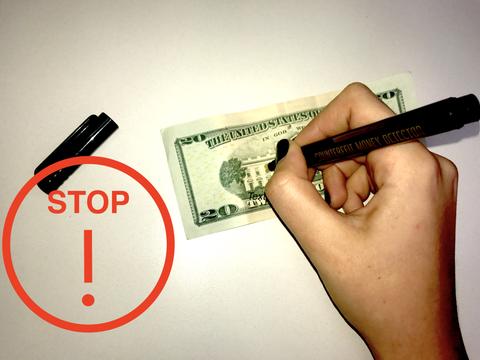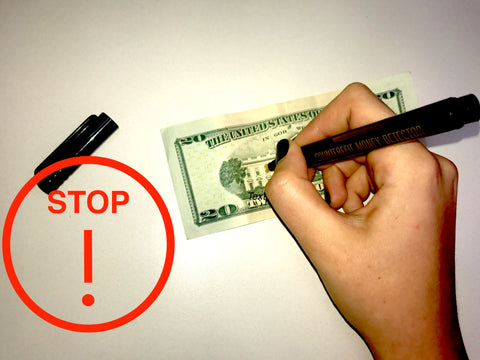Often times, store employees do not know how to identify counterfeit bills and rely on the simplest, least reliable counterfeit detection tool: the counterfeit pen. As a result, multiple fake bills are accepted in cash registers; this causes financial losses because those bills are worth nothing when attempting to deposit them at the bank. As a matter of fact, the United States treasury estimates about $70 million in counterfeit bills are in circulation, or approximately 1 note in counterfeits for every 10,000 in genuine currency.
Here is the thing, counterfeit pens will not detect any fake bills other than some amateur counterfeits printed with a basic laser printer on regular paper, so beware. While counterfeit pens might seem like an affordable counterfeit detection option, the amount of loss you'll incur will easily offset what you would've saved had you used a reliable counterfeit detector. So we'll give you the rundown on counterfeit pens and why they might not be the best option for you.
How Do Counterfeit Pens Work?
So, how does a counterfeit pen really work and how can it tell if a bill is fake or not? It is pretty simple; real bills are printed on cotton fiber paper and do not contain the starches (contained in regular white printer paper) that react with iodine. Therefore, when a bill is genuine, the pen will leave a colorless or brownish mark; if however the bill is counterfeit and printed on regular paper, the pen will detect the starch and its mark will turn black.
The Downside of Counterfeit Pens
The reason why this type of counterfeit detector is not reliable is because it is extremely simple for counterfeiters to replicate bills on the cotton fiber paper used to print real currency. They can either get a genuine dollar bill, bleach it and use it to print a higher denomination, or a less common way is to get their hands on actual currency paper provided by foreign governments unfriendly to the U.S.
Another disadvantage is that counterfeit pens are subject to becoming outdated. For instance, scammers are constantly attempting new ways of forgery. Counterfeit pens may not be able to pick up on these updated methods. In addition, there's the issue with new valid currency forms that will also not be picked up by a pen. If a customer or client is presenting you with a valid bill, and it reads it as fake, it will be an embarrassing situation for you and the client. And ultimately, this experience is just as damaging for a business as accepting a fake bill as real.


